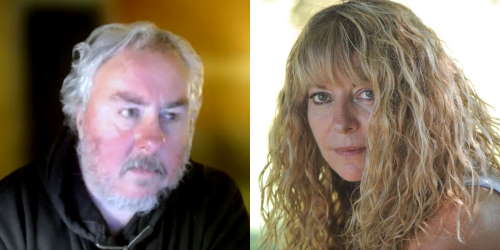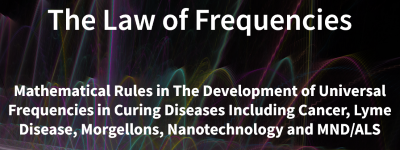Sage’s covert coup, Part Three – The mass behavourial science experiment
Wed 10:41 am +01:00, 17 Mar 2021March 16, 2021

This is the third part of Sonia Elijah’s investigation into the secretive organisation of the government’s Scientific Advisory Group for Emergencies, or Sage. You can read Part One here and Part 2 here.
IN Part 2 of my report I wrote about Sage’s key members and its subgroups SPI-M and SPI-B. Here, I take a closer look at SPI-B, the ‘behavioural science’ arm of Sage, and investigate Nervtag and its data that led to the third lockdown.
A key SPI-B report on ‘Increasing adherence to COVID-19 preventative behaviours among young people’ was considered by Sage on October 22, 2020. It is a shining example of how SPI-B has created a science out of manipulation in order to induce behaviour change it seeks. It recommends techniques that can be used to promote adherence in young people in the face of a decline in ‘following the rules’ by the 18-29 age group. The examples that follow demonstrate the ethically questionable tactics the SPI-B subcommittee deem acceptable. One is using ‘trusted’ celebrities and commercial brands to influence the behaviour of young people:

Another suggests providing young people with ‘free mobile phones data, streaming and gaming’ – in other words, straightforward bribery to induce behaviour change.
The art of manipulation through the means of peer pressure and social conformity is central to the techniques described below.

This is astonishing in the view of concerns about the horrendous effects of online bullying and peer pressure.
The team members involved in the production of this paper and others such as the March 22 SPI-B report, highlighted in Part 2 include:
Professor Susan Michie, SPI-B member, psychologist and political activist who is Professor of health psychology at University College London. She is director of UCL’s Centre for Behaviour Change and of its Health Psychology Research Group. She was the wife of former Corbyn adviser Andrew Murray. She’s been a political activist for the Communist Party of Britain for the past 40 years. Michie is also consultant adviser to the World Health Organisation on Covid-19 and behaviour. Her research programme HBCP (Human Behaviour Change Project) is funded by the Wellcome Trust.
Michie was one of the main Sage voices pressurising Boris Johnson to close schools in December, claiming they were ‘unsafe’. Yet, as I noted in an earlier article for TCW on the school closures catastrophe, the ECDC (European Centre for Disease Control) had found schools to be very low transmission settings for Covid-19.
The subsequent U-turn on Christmas and closure of schools, announced on the very eve of the new school term, speaks volumes about how the government has acted during this crisis. Once again Sage played the ‘bad cop’ to Johnson’s ‘good cop’ and Johnson capitulated as has been his pattern all year.
Dr David Halpern, SPI-B member, psychologist and head of the Behavioural Insights Team (BIT) unofficially known as the Nudge Unit, (since its formation in 2010) co-owned in part by Halpern, its employees, the Cabinet Office and the innovation charity Nesta. The group’s revenues in 2017 climbed by a third to £14million, nearly 40 per cent coming from overseas. Its worldwide clients range from government bodies to the World Bank.
BIT came under scrutiny when Private Eye criticised £200,000-a-year Halpern for charging the government for work it used do itself. It’s worth noting that Halpern was a former member of Tony Blair’s strategy unit and was the first to bring ‘behavioural science’ to Whitehall.
BIT is governed by ’nudge’ theory, conceived by Nobel Prize-winning economist Richard Thaler, which states that governments can tweak people’s behaviour in subtle ways to avoid legislating and ordering. In 2018, Halpern gave a video presentation for the London Business Forum, explaining more about this concept.
Unfortunately, the benign-sounding ‘nudge’ has been transformed into fear-engendering techniques to ensure compliance with the sledgehammer of lockdown and draconian Covid legislation to which we have been subjected over the last year, culminating in the full-blown Project Fear ‘Look into my eyes’ campaign.
Professor Stephen Reicher, professor of psychology at the University of St Andrews, a fellow of the Royal Society of Edinburgh and a leading authority on crowd psychology, is another member of SPI-B.
Reicher wrote in the Guardian that ‘Covid has done much to further the study of behaviour by bringing it into people’s homes and day-to-day conversations’. Perhaps Reicher let the cat out of the bag with that comment – under the pretext of Covid, we’ve all been part of a mass behavioural science experiment conducted by SPI-B.
Reicher was the author of an inflammatory piece in the Guardian headlined ‘Don’t blame “selfish covidiots”. Blame the government’ and was one of Sage’s most vocal proponents for the third lockdown. At the end of December, he wrote another piece in the Guardian, warning that the vaccine roll-out was not enough and stipulating that a ‘five-point emergency plan’ was absolutely necessary.
The justification for the third lockdown was a variant of SARS-CoV-2 said to have arisen in Kent (variant B117). Sage’s SPI-M estimated that it was up to 70 per cent more transmissible than the previously circulating form of the virus, and warned that it ‘may be more deadly’. The modelling was compiled by the discredited Professor Neil Ferguson, his close Imperial College associate Dr Erik Volz and other members of Nervtag (the New and Emerging Respiratory Virus Threats Advisory Group). This is the new group that provides ‘scientific risk assessment and mitigation advice on the threat posed by new and emerging respiratory viruses and on options for their management’.
Volz later admitted that the model that produced the ’70 per cent more transmissible’ statistic was flawed. In an online event on December 18 2020, hosted by Professor Sharon Peacock, executive director and chair of the COVID-19 Genomics UK (COG-UK) consortium (funded by the Wellcome Trust), Volz talked about the data for the new variant being ‘very noisy and overly dispersed’. He spoke of ‘lots of pitfalls you can fall into when analysing the data’.
He used the A222V variant (variant which arose after UK holiday makers returned from Spain last summer) as a reference. Though the modelling predicted a high fatality rate from this variant, the opposite actually happened with low fatality rates. ‘Trends don’t always pan out,’ Volz noted in his presentation. Yet it was this flawed modelling data for the new variant that Volz himself declared as ‘too early to tell, we don’t have enough data’, along with a preliminary genomic characterisation of the new strain by Nervtag member Wendy Barclay, which led to Johnson ‘cancelling’ Christmas and the UK going into a third hard lockdown with schools, colleges and universities being closed from January 4to March 8.
A Mail Online article revealed that minutes from a meeting of Nervtag on Friday December 18 showed that many members had ‘only moderate confidence’ that the new strain was more transmissible. The majority of members concluded that there was ‘currently insufficient data’ on the new strain and opposed drastic action. Needless to say, after the meeting, ‘data’ presented to Johnson showed the new variant to be highly transmissible.
During the same period, when Ferguson was briefing the Commons Select Committee on the need for the third lockdown based on his modelling, he gave a now notorious interview to the Times in which he casually stated, ‘I didn’t even do biology O-level. I’d never even thought about using mathematics to study biological systems. And there’s something very nice about pandemics in particular, the way they behave mathematically.’ In Part 2 of my report I detailed citing the horrific consequences on our country of Ferguson’s flawed maths. On China’s draconian lockdown measures, Ferguson said: ‘It’s a communist one-party state, we said. We couldn’t get away with it in Europe, we thought. And then Italy did it. And we realised we could.’ Well, the experts at Sage and its subgroups certainly did get away with it, and as a result our freedoms and most basic human rights have been stripped away from us for an entire year so far.
A recent letter from GP Anne McCloskey to the BMJ highlights the dangers of the lack of public scrutiny of the ‘advice’ given by these scientists. She writes: ‘Governments were advised in this course of action by scientists and medics whose identity, qualifications and aptitude for this work was largely hidden from public scrutiny. Even now, the conflicts of interest of these people on whose advice our futures depend are not publicly available.’
It’s high time for an independent public inquiry to investigate Sage’s modelling data and the conflicts of interest of the scientists and indeed our politicians.
Sage’s covert coup, Part Three – The mass behavourial science experiment










